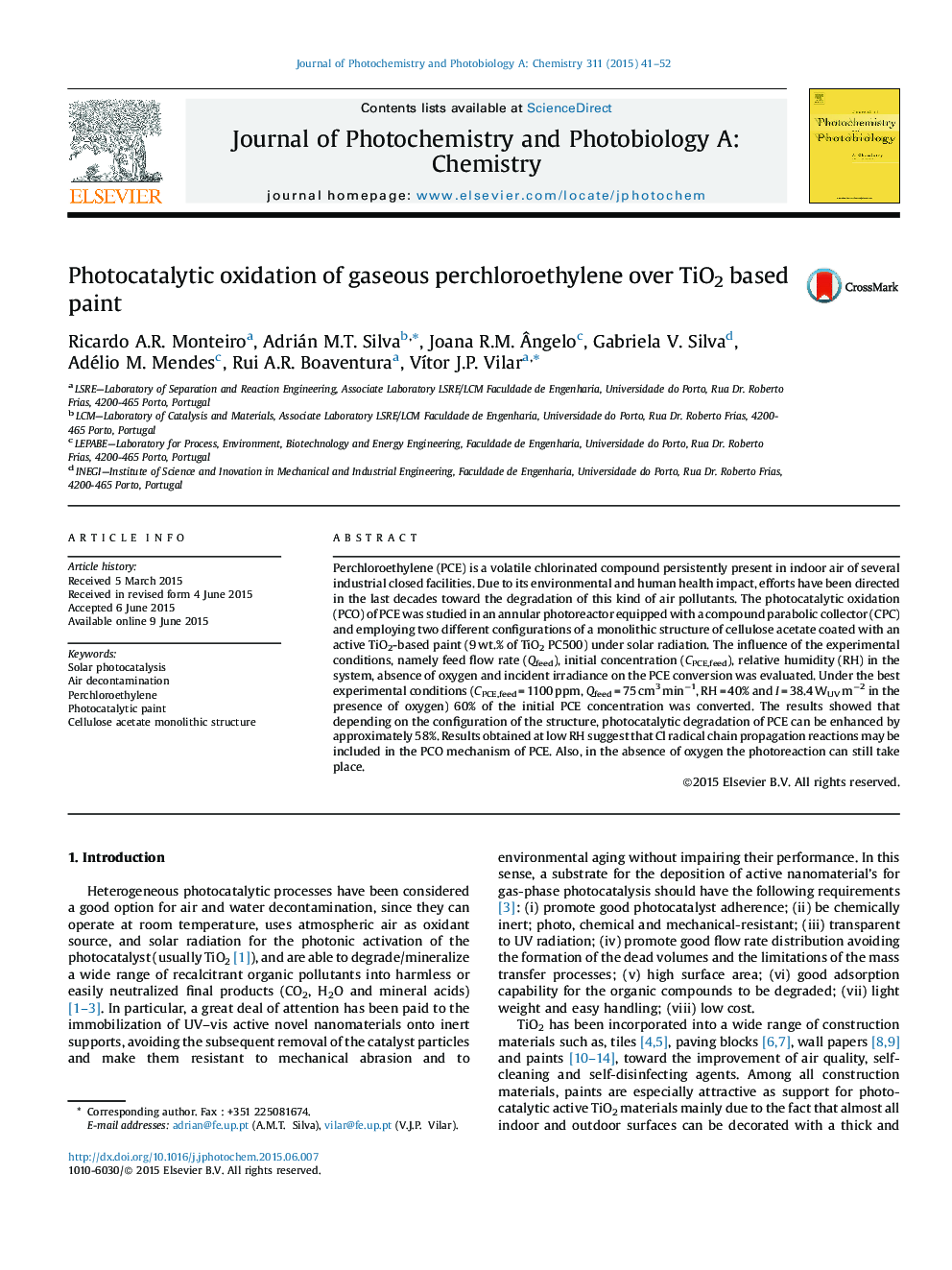| Article ID | Journal | Published Year | Pages | File Type |
|---|---|---|---|---|
| 26108 | Journal of Photochemistry and Photobiology A: Chemistry | 2015 | 12 Pages |
•Application of TiO2 based paints as air depollution agent.•Study of operational parameters influence on PCO of PCE.•Under simulated solar radiation, PCO leads up to 60% of PCE conversion.•A reaction mechanism was proposed for TiO2-based paint PCO of PCE.•Gas-phase molecular oxygen and Cl radicals have an important role in PCO of PCE.
Perchloroethylene (PCE) is a volatile chlorinated compound persistently present in indoor air of several industrial closed facilities. Due to its environmental and human health impact, efforts have been directed in the last decades toward the degradation of this kind of air pollutants. The photocatalytic oxidation (PCO) of PCE was studied in an annular photoreactor equipped with a compound parabolic collector (CPC) and employing two different configurations of a monolithic structure of cellulose acetate coated with an active TiO2-based paint (9 wt.% of TiO2 PC500) under solar radiation. The influence of the experimental conditions, namely feed flow rate (Qfeed), initial concentration (CPCE,feed), relative humidity (RH) in the system, absence of oxygen and incident irradiance on the PCE conversion was evaluated. Under the best experimental conditions (CPCE,feed = 1100 ppm, Qfeed = 75 cm3 min−1, RH = 40% and I = 38.4 WUV m−2 in the presence of oxygen) 60% of the initial PCE concentration was converted. The results showed that depending on the configuration of the structure, photocatalytic degradation of PCE can be enhanced by approximately 58%. Results obtained at low RH suggest that Cl radical chain propagation reactions may be included in the PCO mechanism of PCE. Also, in the absence of oxygen the photoreaction can still take place.
Graphical abstractFigure optionsDownload full-size imageDownload as PowerPoint slide
